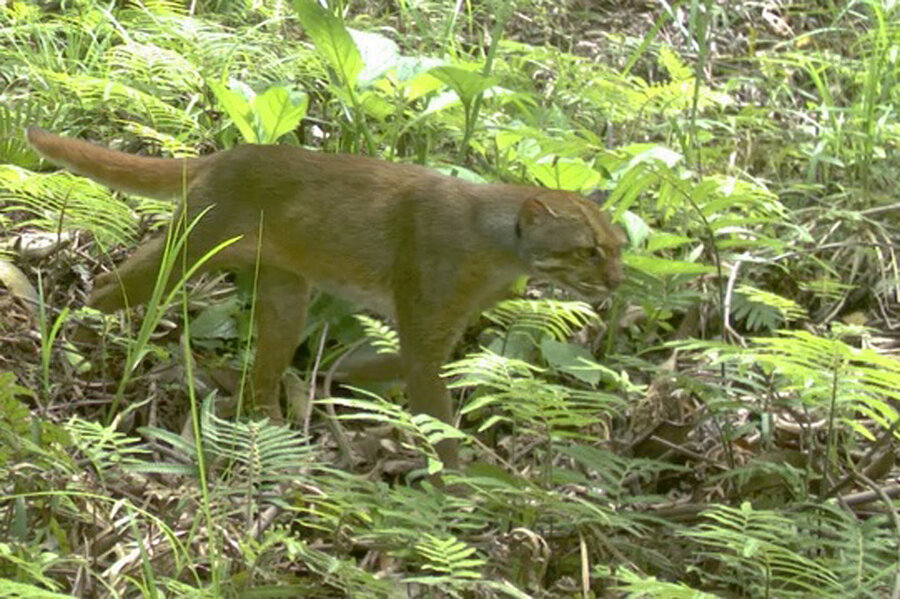Rare cat species spotted in Borneo
Several rare and endangered bay cats were spotted on camera in a heavily logged section of rainforest in Borneo, where scientists didn't expect to find them, a group of researchers announced today (Nov. 4).
The bay cat, or Bornean marbled cat, has only been recorded on video a handful of times before and was only first photographed in 2003, according to a release from the Zoological Society of London and Imperial College London, whose scientists set up the cameras.
In the same area where the bay cats were found, in the northern Borneo, cameras also captured four other cat species, making it one of only four spots where all of these species have been recorded. The four other cat species were the Sunda clouded leopard (Neofelis diardi), leopard cat (Prionailurus bengalensis), flat-headed cat (Prionailurus planiceps) and marbled cat (Pardofelis marmorata). Three out of four of these species are considered vulnerable to extinction by the International Union for Conservation of Nature (IUCN).
"We were completely surprised to see so many bay cats at these sites in Borneo where natural forests have been so heavily logged for the timber trade," said Robert Ewers, an Imperial College London researcher, in the statement. [Watch: Cameras Spot Rare Bay Cats in Borneo]
Very little is known about Borneo bay cats because they are shy and have low population densities, according to the IUCN. However, scientists estimate there are fewer than 2,500 adults remaining in the wild, and that their population will decline by 20 percent in the next 12 years due to deforestation in Borneo, the IUCN reported.
Unlike other camera traps that are often set up at strategic locations, these were placed at random locations, which apparently helped to spot the endangered cats.
"We discovered that randomly placed cameras have a big influence on the species recorded," said Oliver Wearn, a researcher at the Zoological Society of London. "This is something I was taught in school — I remember doing a project on which plant species were most abundant on our playing field, and being taught to fling quadrats [a geometric tool used to define a study area] over my shoulder in a random direction before seeing what plants lay within it, rather than placing it somewhere that looked like a good place to put it — the same principle applies here."
Email Douglas Main or follow him on Twitter or Google+. Follow us @OAPlanet, Facebook or Google+. Original article on LiveScience's OurAmazingPlanet.
- In Photos: Borneo's Quirky Species
- Camera Trapped: Wonderful and Weird Wildlife Around the World
- In Images: 100 Most Threatened Species
Copyright 2013 LiveScience, a TechMediaNetwork company. All rights reserved. This material may not be published, broadcast, rewritten or redistributed.





